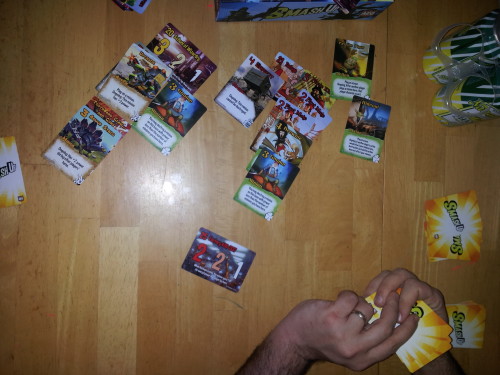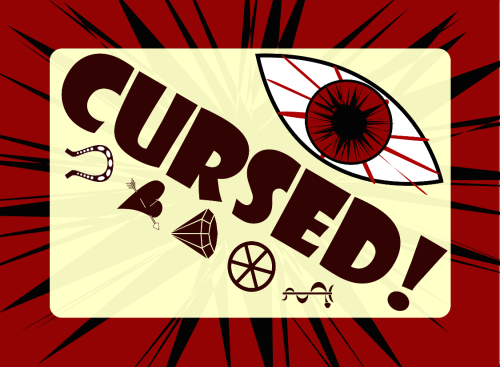SmashUp earns a Narragansett Shandy

SmashUp, put out by AEG and designed by Paul Peterson, is one of those cross-over games that gets hobby gamers and casual players together for a good time. The theme and simple rules appeal to folks used to mass-market games and the strategic depth of some of the factions will keep the thinkers engaged.
There are any number of expansions and additions, but we’re going to focus here on the original SmashUp and its eight factions (supporting up to four players).
Gameplay Overview
To start, there is a simple drafting process where players take turn choosing factions. After each player has two faction decks, they Smash them Up (i.e. they shuffle the decks together) and this becomes the player deck. Unlike a deck-builder, this deck won’t grow or shrink, but the card order and such can be manipulated by playing cards. If you want to keep the game short and simple, don’t choose the Wizards or Zombies, since both of those decks involve lots of extra actions, searching through piles of cards, etc.
A number of bases are then drawn based on the number of players and players take turns adding minions to control (and eventually receive points from) the bases. Most of the minions have special actions or modifiers and each deck also contains action cards that can impact the game. Once a base has accumulated the right amount of minions, players earn their points and the base is replaced by another. They all vary in amount of minion power required to score it, the number of points awarded to each player, and what the special rule for that base is. First player to fifteen points wins!
Graphic Design for the Win
We’ve played SmashUp with both adults and kids. Getting off the ground with this game, even with non-gamer types, is easy as pie. Everything you need to know about a card is right there in front of you, organized for quick access. There is an icon for the faction (important when you’re piling up minions from multiple players), a box for the special actions or modifiers, a power level in the upper corner, and some art to round out the card.
Overkill with the Ongoing
While most of the consequences of playing an action or a minion are immediate, a number of the cards (and most of the bases) have effects labeled as “ongoing.” When you’ve got two players running against three bases, keeping track of the various ongoing effects and optional actions can be a bit daunting, but it is doable. Up the player count (and hence the number of bases) by one, though, and it can become too difficult. Stuff falls through the cracks and you’re better off just focusing your attention on subsets of bases to ensure you can keep track of it all.
Beer Rating
This game is light and pleasant, just like a Shandy, and we can’t imagine many people disliking it (though ambivalence might be on the table).

Leave a Reply